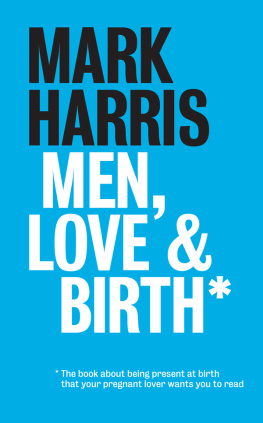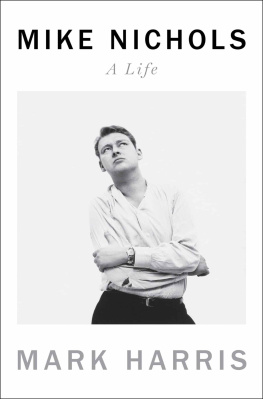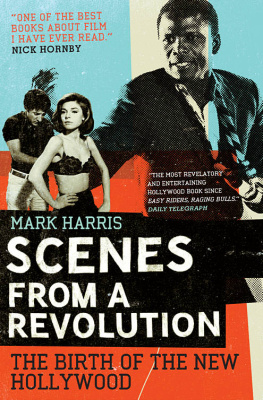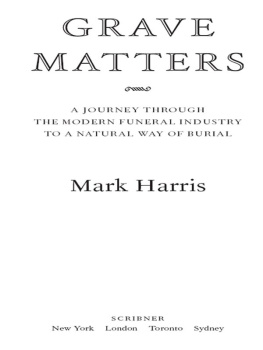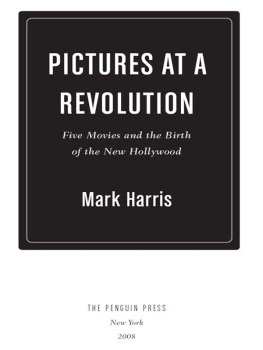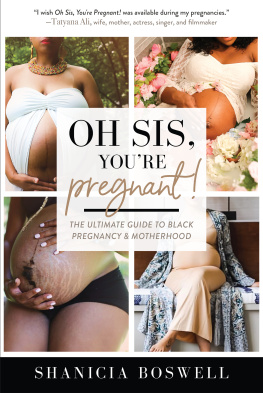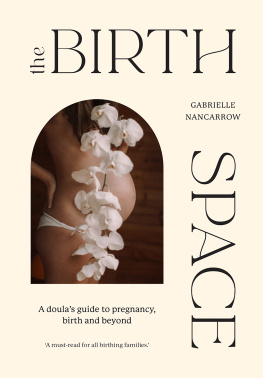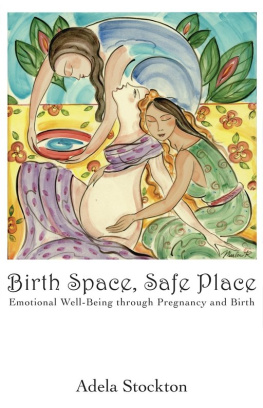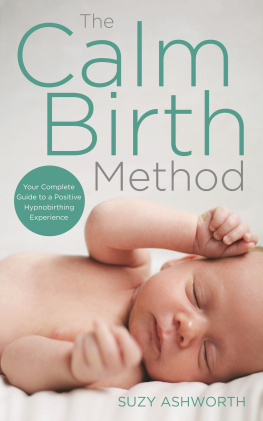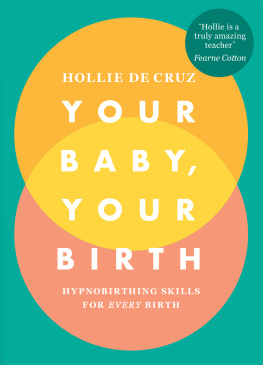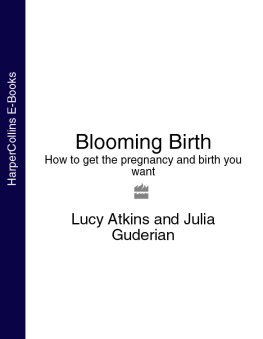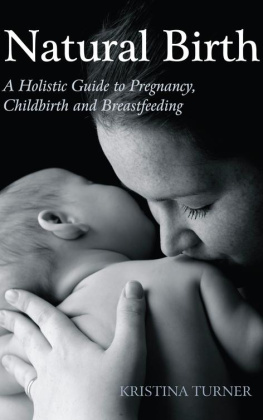

Men, Love & Birth: the book about being present at birth that your pregnant lover wants you to read
First published by Pinter & Martin Ltd 2015
Text copyright Mark Harris 2015
Illustrations copyright Jon Lander 2015
Mark Harris has asserted his moral rights to be identified as the author of this work in accordance with the Copyright, Designs and Patents Act of 1988.
Text in Katie Whitehouse, reprinted by kind permission of the author
Photographs in Kate Mount
All rights reserved
ISBN 978-1-78066-225-1
Also available as ebook
British Library Cataloguing-in-Publication Data
A catalogue record for this book is available from the British Library.
This book is sold subject to the condition that it shall not, by way of trade and otherwise, be lent, resold, hired out, or otherwise circulated without the publishers prior consent in any form or binding or cover other than that in which it is published and without a similar condition being imposed on the subsequent purchaser.
Printed and bound in the UK by Ashford Colour Press Ltd, Gosport,
Hampshire
Pinter & Martin Ltd
6 Effra Parade London SW2 1PS
pinterandmartin.com
To my Gorgeeeeee
We found love in a hopeless place
FOREWORD
Men, Love & Birth is a unique contribution to the literature on contemporary childbirth because it speaks into the experience of tens of thousands of men who now accompany their partners for the labour and birth event. The expectation that male partners should be at the birth is almost routine in many high-income countries. And, like many other practices around childbirth, the benefits or disadvantages of this practice are unknown, at least from a research perspective. This is of little comfort to the many men who have trod this path, usually with some trepidation, as the expectation that they are there has become culturally embedded. At last there is a book written just for them, and no one is better qualified to write it than Mark Harris. He has the important advantage of seeing this experience from both sides of the fence as a father of six children and as a midwife, working within the NHS for a number of years.
Marks style is direct, candid and self-disclosing, distilling an incredible breadth of reading and experience into punchy, accessible chapters that range over in-depth childbirth physiology through to love-making positions for pregnancy and of course labour and birth itself. Prepare to be amused, informed, challenged and moved by his self-deprecating anecdotes and colloquial language. Mark achieves the tricky balance of explaining complicated theories and ideas in a straightforward way and then offers practical tasks and exercises to apply them to real life. He draws on a range of theorists and theories in building an approach to birth that seeks to maximise womens potential to birth safely and healthily. For most women, that will mean natural, normal birth. His midwifery lens shines through everything he writes and he is therefore able to demystify the terminology of labour that can obscure a fundamentally physiological process.
He introduces the concept of male and female energies that both men and women possess and describes how men can channel those energies for the benefit of their partner, illustrating this with lots of practical tips and advice. Building on his interactions with many men through his Birthing For Blokes website and workshops, he details a typical workshop discussion towards the end of the book that captures much of his teaching in extended conversational extracts.
This book is intended to help men engage in a positive way with an experience outside of their comfort zone that, lets face it, has the potential to be upsetting for them and counterproductive for their partners. But by understanding the purpose behind evolutionary processes and how birth hormones work, we can change that dynamic so that it is exciting and rewarding for them and enabling for the one they love. It may even help to change the way we manage birth in the twenty-first century and rescue it from unnecessary medicalisation, something midwife researchers like me and my colleagues have been trying to address for decades.
Denis Walsh
Associate Professor in Midwifery
Nottingham University
INTRODUCTION
People always struggle to guess what I do for a living. Ive won more than one round of drinks playing that game. When I finally reveal, three pints later, that Im a midwife, people still dont believe it.
Its not much different when Im at work. I walk into the birth room and the woman says, I called the midwife, not security, to which I reply, I am the midwife. She then shouts, SECURITY!
I do understand that response. Imagine your partner is in the throes of the birthing process, just about managing the intensity of the uterine tightenings, and in walks a 20 stone, shaven-headed, biker-looking bloke doing jazz hands. (I do my best not to do the hands thing, but its become a bit of a habit).
When I first started out as a student midwife, there were only 61 male midwives out of 36,000 in the whole of the UK. I remember standing at the foot of a womans bed, having been asked by my mentor to do my first vaginal examination. My mind was racing, and more than a little panicked, I thought, Please, please let this not be the first time I stumble on the clitoris!
I am often asked why I became a midwife, given how unusual it is for a man to do the job. I do come from a large family five sisters and three brothers and now I have six children and six grandchildren. Maybe this is what has created a love of pregnancy and birth in me? It does mean that my contraceptive advice is probably crap.
My sons grew up in a household where a man being a midwife was normal. In fact they wanted to be midwives like their dad until they realised that being a midwife was considered a womans job. Then, when their friends asked them what their dad did for a living, they would say, Oh, nothing, hes unemployed.
My mother left an indelible mark on me: she gave birth to eight children with little medical help. After having her last child aged 46, she went on to adopt a child too. In many ways I have followed in her footsteps, gaining a deep faith in a womans inner power to give birth.
Its impossible to underestimate the power of a mother and fathers influence on a young childs developing personality. My mum teased me mercilessly about my weight. For as long as I can remember I have struggled to lose weight and have been self-conscious about my size. She used to say that my first school photograph was an aerial shot, and that she took me to school in a wheelbarrow. (A little harsh, methinks.)
Being a male midwife is one thing; looking like an extra from Gangs of New York is another. I did look after one woman, who once she had calmed down after the birth said to me that I looked like an actor. Oh, she said, You know its on the tip of my tongue. I was thinking, an overweight Vin Diesel? Or a plump Bruce Willis? Finally, she got it. SHREK! she exclaimed.
My mental battle with size was brought into sharp focus when, not long after joining a new midwifery team, I was invited on one of those Outward Bound team-building days. All the others had done their abseil down the side of a bridge. It was a long way down, and I was more than nervous. Has that rope got a weight limit? I asked. Youd get a minibus on this rope, the weathered instructor said, encouragingly. By now I was properly scared, desperate to get out of doing it without losing face. Have you ever had a minibus on it? I asked, wanting to keep the conversation going as long as I could. Nope, he said, Youre the closest weve come!
Next page
